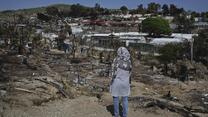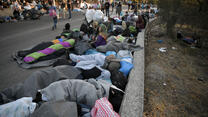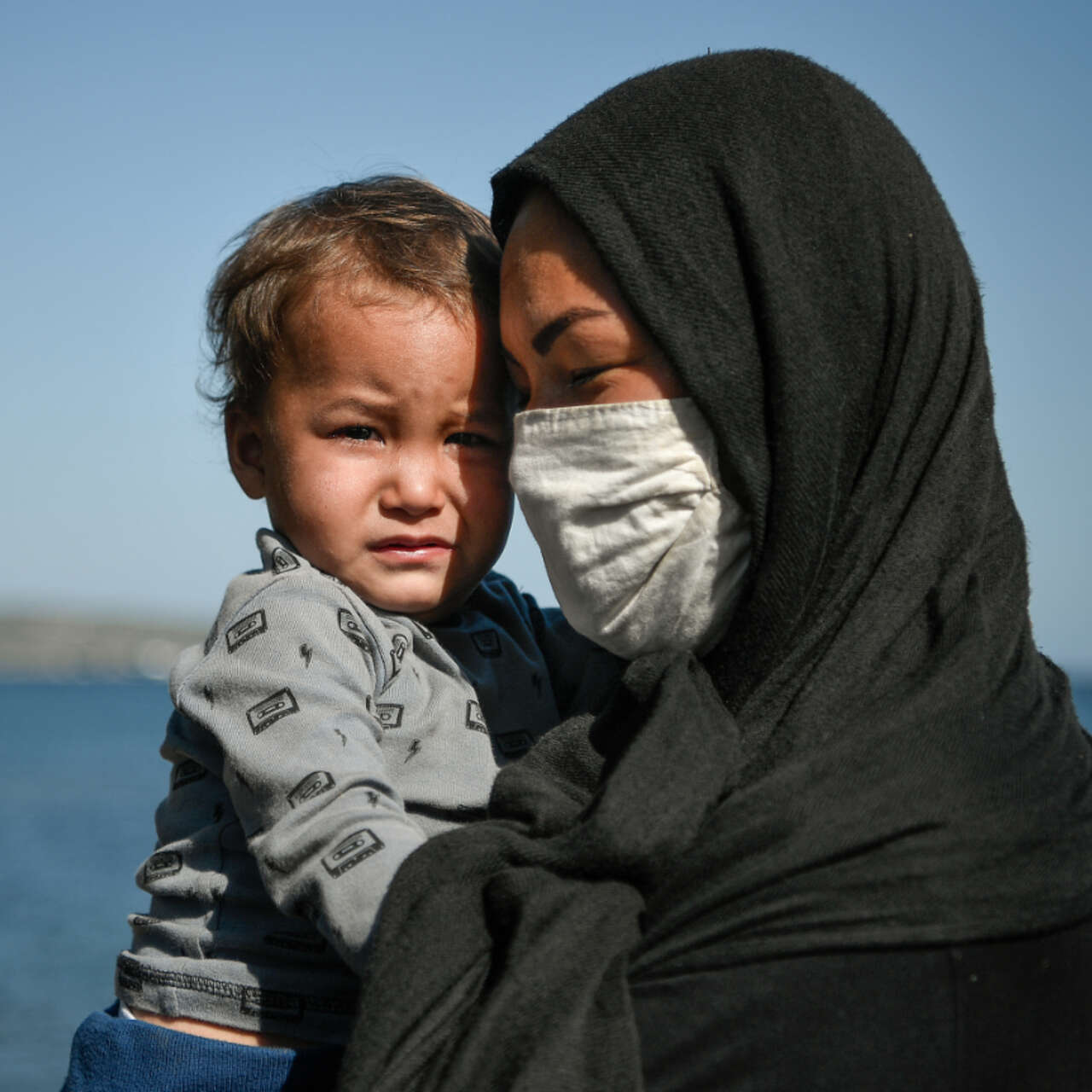
Ten years ago, migration made headlines across Europe as 1.2 million people arrived in search of safety—a number that, in a single year, has only been surpassed by the displacement caused by the war in Ukraine.
From moments of humanity and compassion to policies of containment and exclusion, the continent’s response has revealed a lot of contradictions. But, above all, the past decade has also redefined the meaning of hope and resilience, as refugees have bravely rebuilt their lives despite the odds.
2015: Migration makes headlines in Europe
In 2015, over one million people arrived in Europe by sea, fleeing war in Syria, global conflict and persecution. That summer, Greece and Italy saw an unprecedented number of people arriving at their shores, calling for international solidarity to help relocate asylum seekers from the hotspots. Germany, under Chancellor Angela Merkel, heeded this call and opened its doors to hundreds of thousands, declaring “Wir schaffen das” (“We can do this”). Despite an initial wave of public support for welcoming refugees, other countries, like Hungary, started building fences along its borders to keep people out. A photo of the lifeless body of Alan Kurdi, a Syrian toddler who drowned in the Mediterranean Sea on 2 September along with his mother and brother, shocked the world, and became a tragic symbol of treacherous journeys in search of safety.
To respond to soaring levels of humanitarian needs, many citizen and grassroots initiatives emerged across Europe. At the same time, the IRC started our work in Greece.

2016: The EU-Turkey Deal
In 2016 the EU signed a controversial agreement with Turkey, under which, in exchange for financial aid, Turkey agreed to readmit all individuals arriving irregularly on the Greek islands whose asylum applications were found to be inadmissible . The deal, combined with the closure of the migration route leading through the Balkans, left thousands stranded in overcrowded camps on Greek islands.
Before striking the deal with Turkey, the EU pledged to relocate 160,000 asylum seekers from Greece and Italy, though many European countries failed to fully meet their commitments. Meanwhile, countries like Austria and Slovenia reintroduced internal border controls, challenging the Schengen system and the principle of free movement.
2017–2018: Shifting policies and public opinion
Although the number of people arriving had declined, the issue of migration became increasingly politicized, polarizing public opinion. While the mass movement for refugee solidarity continued, anti-refugee sentiments grew in power, with far-right parties gaining ground in several countries. While most EU states signed the Global Compact for Migration, a crucial step towards ensuring the safe, predictable and humane management of migration, others—including Hungary and Poland—refused, citing sovereignty concerns. Italy and others began closing ports to NGO rescue ships, forcing them to limit or stop their operations and criminalizing rescue efforts, which to date continues to leave many people seeking safety stranded at sea.
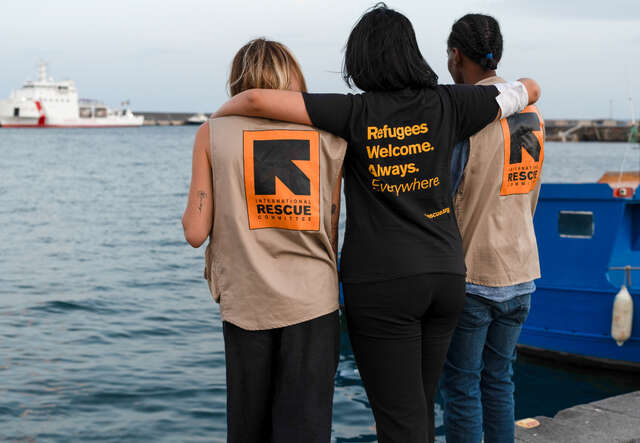
2019: Dangerous crossings and political deadlock
Despite the deadly risks and increasingly hostile migration policies, people continued to cross the Central Mediterranean seeking safety and protection in Europe, too often facing exploitation and abuse on the way. The European Commission, under Ursula von der Leyen’s leadership, began drafting a New Pact on Migration and Asylum intended to mark “a fresh start” and create a more predictable and unified migration system in Europe.
2020: COVID-19 pandemic
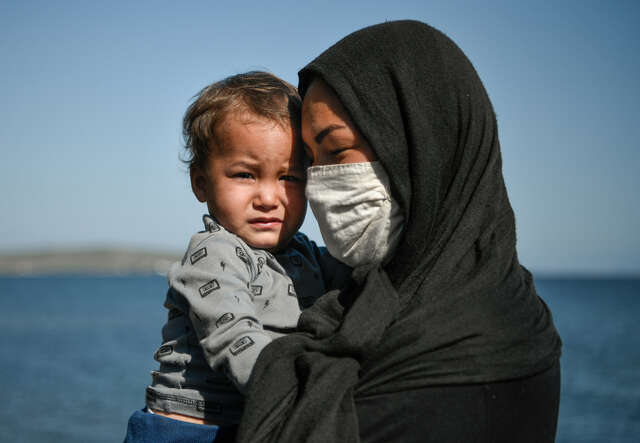
The COVID-19 pandemic brought the world and global mobility to a halt, shutting down borders, freezing asylum and resettlement procedures. People on the move became increasingly trapped in limbo, refugees and asylum seekers, especially those residing in closed centers and camps, faced an impossible situation amidst the pandemic, with even more limited access to healthcare. As many countries’ attention turned inwards, people on the move faced greater stigmatization by some politicians and parts of the media.
Fires destroy Moria camp
In the late hours of 8 September, large fires broke out in Moria, a refugee camp in the Greek island of Lesvos which had become notorious for its cramped, dangerous conditions and a symbol of Europe’s chaotic response to migration. The fires destroyed many people’s shelters and the few belongings they had left. Some 13,000 people suddenly found themselves without access to the most basic needs like food, water and healthcare in the midst of the global pandemic, taking a devastating toll on their mental health.
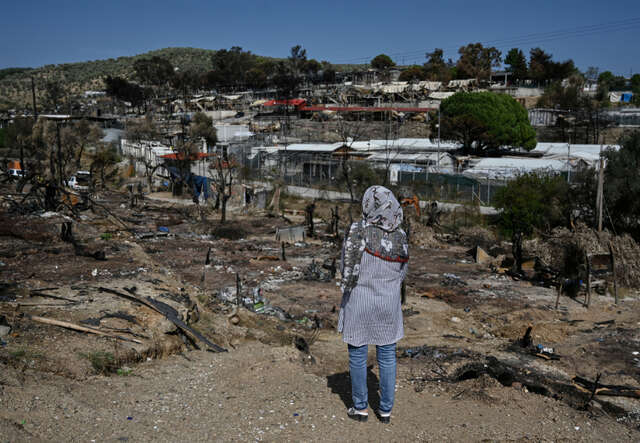
2021: Belarus-Poland border crisis and Afghanistan displacement
In November 2021, the reports of thousands of asylum seekers caught and pushed back while attempting to cross the border from Belarus to Poland first made the headlines. The authorities in Belarus lured vulnerable people to its borders in a dangerous political strategy that has left many thousands of people trapped on the edge of Europe and cut off from humanitarian aid and asylum support, marking another zone where people face pushbacks and other human rights violations at Europe’s borders – with more than 200,000 pushbacks recorded only in 2022.
The Taliban’s return to power in Afghanistan triggered a new wave of displacement. Nearly 3.6 million Afghans fled the country between 2021 and 2022, with over 100,000 people applying for asylum in EU countries in 2021.

2022: War in Ukraine
Russia’s full-scale invasion of Ukraine led to the largest displacement in Europe since World War II. Over 8 million Ukrainians fled the country at the onset of the war, prompting the EU to trigger the Temporary Protection Directive for the first time in history. Refugees from Ukraine were granted immediate protection status rights to work, education, and healthcare in the EU, the UK and across the US. The global response and solidarity in response to the war in Ukraine showed what is possible when refugees are truly supported and welcomed, and highlighted the double standard underpinning global response to people seeking safety from other countries.

2023: The Pylos shipwreck
In June 2023, a fishing boat carrying hundreds of people capsized off the coast of Greece, killing over 600 in one of the deadliest shipwrecks in the Mediterranean, and sparking renewed calls for safe routes for refugees and asylum seekers. Since 2014, more than 76,000 people have died or gone missing in the Mediterranean while attempting to reach Europe – with the true toll likely to be much higher.
Pushbacks, detentions, and deaths at sea remained a daily reality for countless people on the move. Human rights organizations recorded almost 350,000 pushbacks at European borders in 2023, potentially marking a record high, as some EU states sought to pass laws legalizing this dangerous and often deadly practice.
2024: From welcome to walls
The EU adopted its long-negotiated New Pact on Migration and Asylum. a delicate compromise which has left many troubling cracks and grey areas in the foundations of the EU’s migration system. IRC has warned that the Pact requires careful monitoring and safeguards in its implementation to avoid even greater human rights violations at Europe’s borders, a further rollback of people’s right to seek asylum, more detention at borders, inadequate protection of children, increased pushbacks, and more attempts to “outsource” asylum processing.
Italy signed a new deal with Albania to externalize asylum processing, which marked another worrying shift toward outsourcing responsibility and limiting access to protection on European soil. Meanwhile, before the ink was even dry on the Pact, pressure began building from certain member states on the new European Commission to introduce new restrictive measures, with a focus on detention, deportations and outsourcing migration management to non-EU countries.

2025: A decade of contrasts
Against a background of global aid cuts which are affecting the future of refugee support and protection in Europe, the resilience of refugees continues to be evident in their contributions to their communities and local economies. Every year, IRC supports thousands of asylum seekers with livelihood programmes aimed at improving their wellbeing, employability and entrepreneurship. Over the past decade, we have seen first-hand how refugees have strived to rebuild their lives, against the odds – proving what is possible when refugees are embraced by their new communities.
Take action
Ten years on, we call on you to stand in solidarity with refugees across Europe and around the world. As political will wavers and humanitarian needs rise, your support can help ensure inclusion, dignity, and opportunity for those who need it most. Donate now to help us maintain critical activities that provide housing, education, mental health support, and job training. Show up — volunteer, share refugee stories, and stand with those rebuilding their lives.

